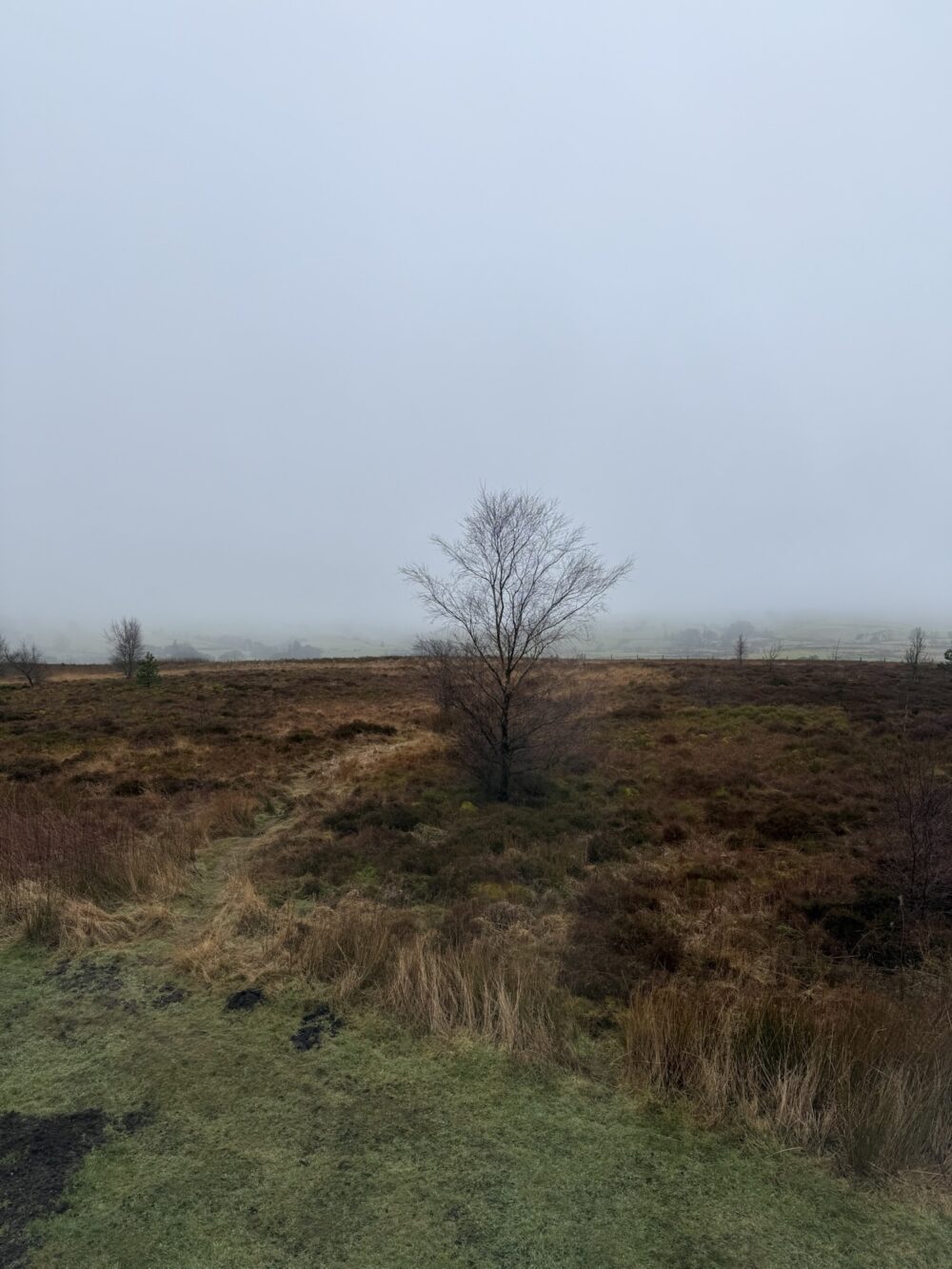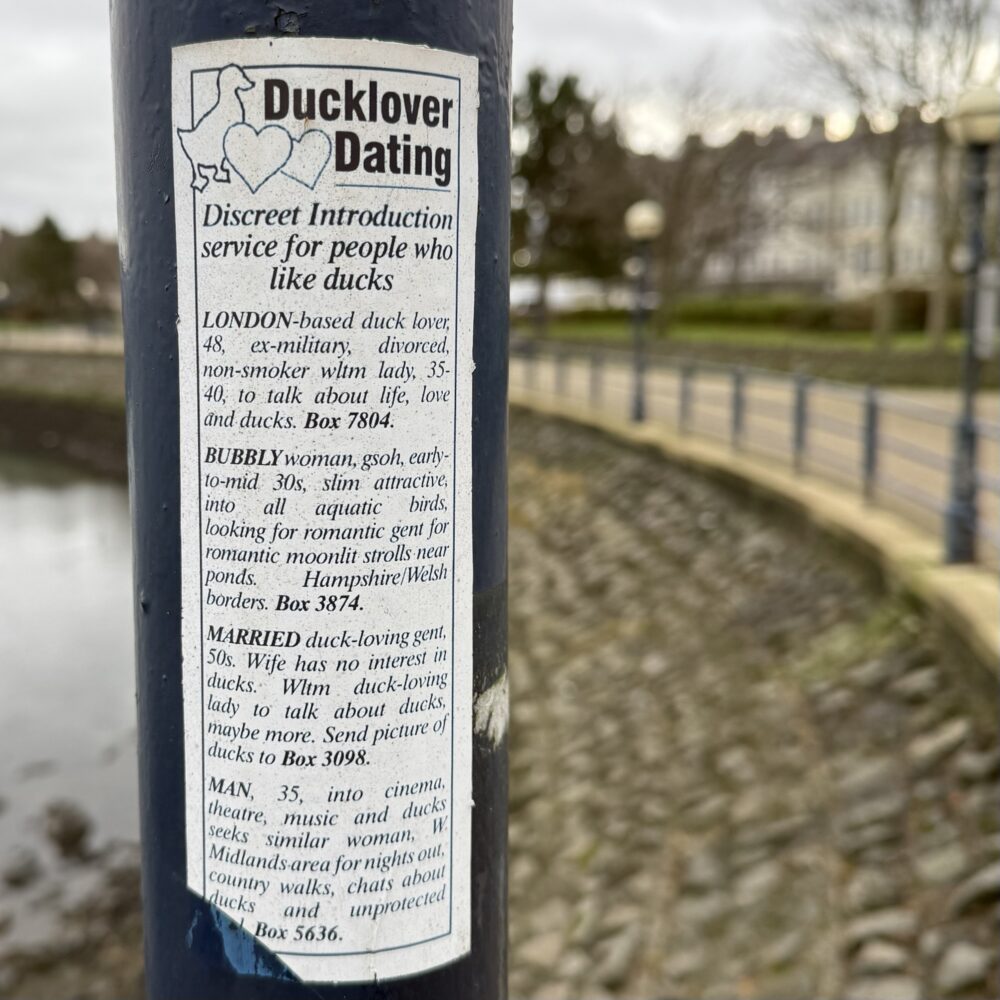My 2024 in 24 numbers
In 2023 and 2024, I used my New Year’s Day post to count things… so let’s kick off 2025 in the time-honoured tradition. Here are 24 numbers about my life in 2024, in descending numerical order, with a few comparisons to previous years.
Wendy and I took 2,343 photos
▲ 666 vs 2023 / ▲ 604 vs 2022
I didn’t anticipate this turning out to be the highest number on my 2024 list! Averaging more than six photos per day would have seemed insane only a few years ago – a roll of film wouldn’t last a week – and yet here we are. Wendy has been made an effort to take more photos in 2024, so that may have contributed to this remarkable increase.
I walked 2,214 miles
▲ 35 vs 2023 / ▲ 212 vs 2022
I walked more in 2024 than the previous year, though the bulk was still attributable to walking to and from work. I regularly count my blessings for having the ability to do that: it’s possibly more important for my psychological health than for my legs’ health, in all honesty. It worked out at an average of about 14,400 steps per day.
My car drove 1,524 miles
▼ 1,152 vs 2023 / ▼ 307 vs 2022
I didn’t drive much in 2024, with my figure nearly halved from 2023. In fact, it’s probably too little to reasonably justify owning a car. And yes, I feel very smug at having walked further than I drove in 2024.
I sent 435 personal emails
▲ 52 vs 2023 / ▲ 54 vs 2022
Every year, I’m surprised by how high this number is. 2024’s figure was higher than ever. I don’t really know what I’m doing sending that many emails.
I published 366 blog posts
▲ 1 vs 2023 / ▲ 293 vs 2022
In 2023, I set myself the goal of publishing something every day, as a sort of celebration of the twentieth anniversary of the first post on this blog. I met that goal and continued it into 2024, scoring one extra day as a result of the leap year. I haven’t yet made up my mind as to whether to continue into 2025.
I took my blood pressure 310 times
▲ 180 vs 2023 / ▲ 150 vs 2022
Look, I know this seems excessive, but I have an excuse: I struggled a bit with my blood pressure in 2024 and had to increase my antihypertensive dose, so I’ve been trying to monitor it daily. I promise it’s not just obsessive.
My tumble dryer completed 214 cycles
▲ 21 vs 2023 / ▲ 23 vs 2022
My sole reason for counting this is that the machine does it anyway: I don’t really know what it means. I do know that the final load of the year is currently waiting to be taken out of the dryer while I’m procrastinating by writing a blog post.
I used public transport on 166 days
★ New count for 2024
I’m lucky to live somewhere with decent public transport. I used the bus on 85 days, the Metro on 81, the train on 24, a plane on 22, a ferry on 6, the London Underground on 5, a taxi on 3, a hired e-scooter on 3, and a tram and a coach on one day each. Those don’t sum to 166 because I often use multiple modes in a single day.
I would have guessed that I used the bus far more than the Metro, so I’m surprised by how similar those tallies appear to be.
I used 97 single-use paper cups for hot drinks
▲ 9 vs 2023 / ▲ 62 vs 2022
Well, this is an unhappy trend: I surpassed my 2023 total despite regularly carrying my HuskeeCup. In 2023, I whinged that 52% of the times I’d used a paper cup it was because the seller had used one even though I was drinking in the venue. This makes me mad, but only applies to 40% of this year’s paper cup use, so I need to take some personal responsibility here. I’ll try harder in 2025.
I used 75 stamps
▲ 2 vs 2023
People say that the art of sending letters is dead, yet I sent 75 things that Royal Mail classed as letters in 2024 by sticking on a stamp and placing them in a postbox. Almost all of those stamps have been ‘special edition’ ones to avoid the ugly barcodes. Wendy and I used 2022 Wallace and Gromit stamps for our Christmas cards this year, bought long before we realised that a new animation would be the BBC’s Christmas centrepiece this year.
I swam 65 miles
▼ 26 vs 2023 / ▲ 4 vs 2022
Oof, this is down a lot for 2024. My only excuse is that my pool closed for a big chunk of the year after its mechanical moving bottom broke: but this probably also reflects some reluctance to move my own bottom. I still averaged more than a mile a week, though, which must surely be alright-ish?
I placed 60 Deliveroo orders
▲ 33 vs 2023 / ▼ 62 vs 2022
This is quite a chunky increase… but surely roughly one Deliveroo per week isn’t too terrible in the grand scheme of things?
I read and reviewed 42 books
▼ 4 vs 2023 / ▼ 24 vs 2022
I read less than usual in 2023 and felt it. In 2024, I read still fewer books, but I really didn’t felt it. I think this is partly because I read longer books than usual, so the overall time I’ve spent reading has probably reduced less than the headline number implies.
I drove a car on 40 days
★ New count for 2024
Previously, I’ve counted the number of day my car has been driven: 79 in 2023 and 73 in 2022. I had a car insurance gadget that did the counting, you see. For 2024, I just counted the number of days that I drove any car. I drove exactly two cars, mine and Wendy’s, and clearly not very much. It may well have worked out cheaper to hire a car for 40 days than the cost of the insurance and maintenance of my own car.
I took 28 flights
▲ 17 vs 2023 / ▲ 11 vs 2022
Last year, I said this might creep up again, but that I couldn’t ever see myself getting up to the 29 flights I took in 2019… flygskam is real. I didn’t do such a good job of re-routing myself onto ground transportation in 2024, and I’m afraid to admit that I’ve already got four flights booked for 2025. There are no good excuses.
I borrowed 28 library books
▲ 1 vs 2023 / ▼ 7 vs 2022
I think this works out to a pretty good proportion of the books I read. Thanks as always to Newcastle City Library and the London Library, from where I borrow from most frequently, though there are at least five other libraries that I occasionally borrow from. I’m very fortunate to be so well-supplied.
I made 27 personal phone calls
▼ 5 vs 2023 / ▼ 23 vs 2022
As previously, I only counted actual telephone calls in this total, whereas most of my personal ‘calls’ are via FaceTime or WhatsApp. It feels to me like the traditional phone call is becoming a thing of the past, so I’m not surprised to see that this number is continuing to shrink year-on-year.
I was driven in a car on 27 days
★ New count for 2024
I’d rather be a passenger than a driver, and I managed that on 27 days in 2024. I decided to count this as I thought that only presenting the number of days on which I drove gave a misleading impression of the extent to which I’m still reliant on cars.
I spent 20 nights in hotels
▼ 16 vs 2023 / ▼ 7 vs 2022
I’ve was away in hotels for fewer nights than usual in 2024, both for leisure and work purposes. Despite the dramatic decline, I hadn’t really noticed. I think I’ve probably spent more nights staying with relatives in 2024 than previous years, but that’s not something I currently count.
I placed 16 Amazon orders
▼ 124 vs 2023 / ▼ 210 vs 2022
This time in 2023, I resolved to give Amazon less of my business: their ethical practices were, as Mary Muffet from The Heart’s Invisible Furies would say, ‘not my standard at all’. It’s taken me a couple of years to almost edge them out of my life. The main advantage has been to feel like I’m supporting a lot of smaller, more worthy businesses. The main disadvantage has been my mum’s complaints about me not renewing Amazon Prime: she used to use my subscription for her own deliveries.
I visited 5 countries
▼ 1 vs 2022 / ⧓ No change vs 2022
As previously, I’m counting the UK in this total. None of the visited countries were new to me again in 2024, which is a shame, and none of them were Italy, which is almost a bigger shame.
In previous conversations, Wendy has said that I ought only to count countries in which I’ve overnighted, in which case this year’s total is actually four. My rule, though, is that I can count countries in which I’ve dined while both stationary and not in an airport (a meal on moving transport doesn’t count).
You can take your pick.
I wore 5 new pairs of shoes
▲ 2 vs 2023 / ▼ 1 vs 2022
One of them was a Christmas present from Wendy, and therefore a remarkably late addition to this count.
I made 4 blood donations
⧓ No change vs 2023 / ⧓ No change vs 2022
Because I donate every twelve weeks, it’s sometimes possible to squeeze five donations into a calendar year if the dates align… but they didn’t in 2024.
I cycled 0 miles
⧓ No change vs 2023 / ⧓ No change vs 2022
I’m no cyclist: I don’t own a bike and haven’t borrowed one since 2021. I have, however, ridden 3.8 miles on hired e-scooters this year, which was a bit of a novelty.
This post was filed under: Counting.







